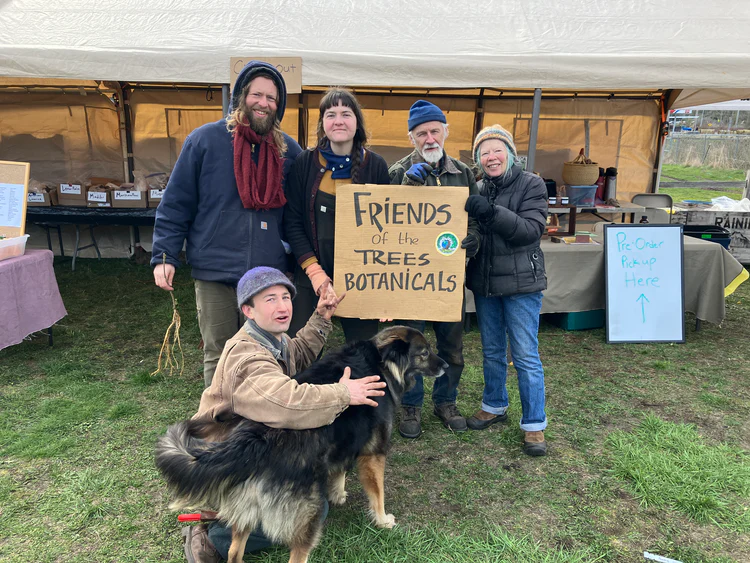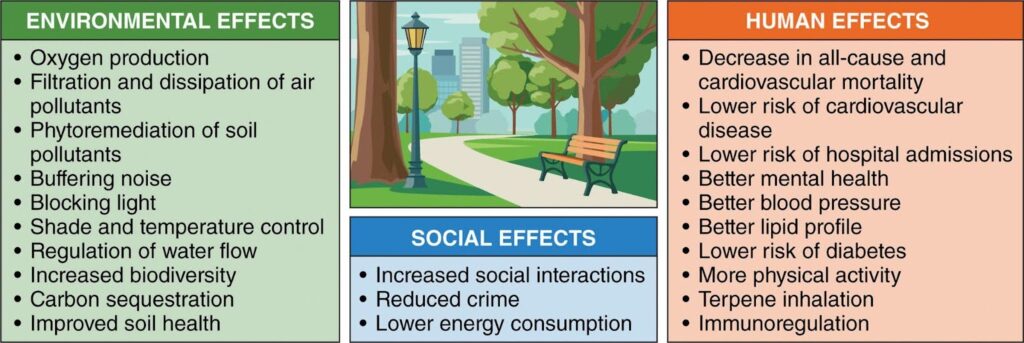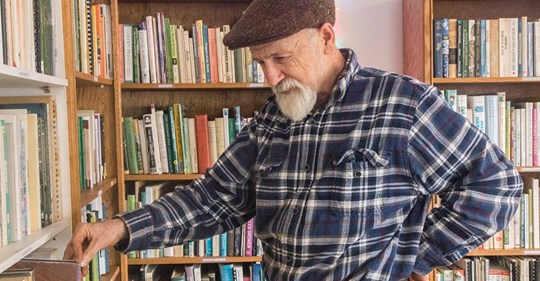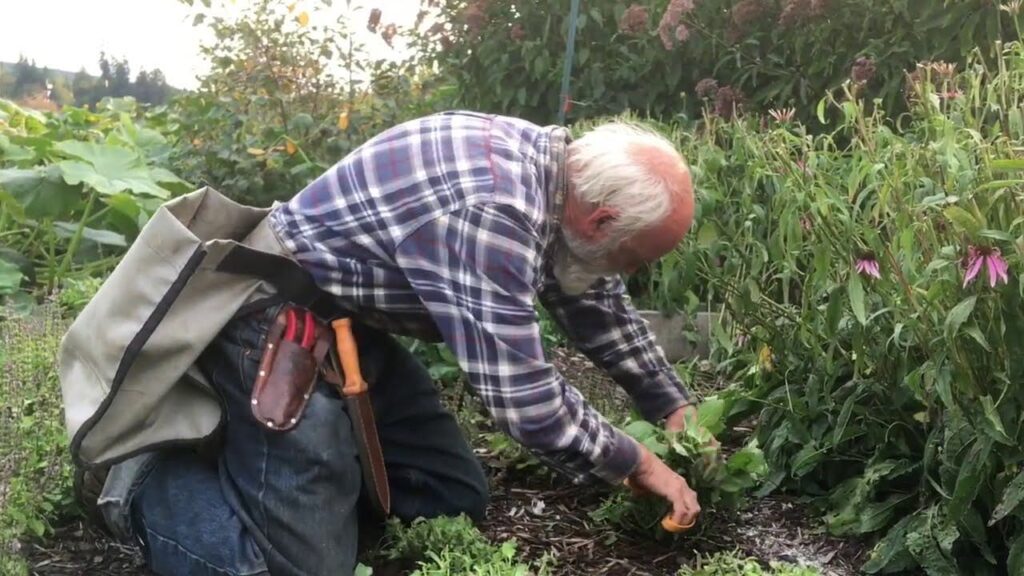Permaculture in Practice: Michael Pilarski and the Movement to Re-Green the Planet
Michael Pilarski. Image from United Plant Savers
Permaculture is the practice of integrating sustainable ecosystems into human living and agricultural spaces. The term was coined by Bill Mollison and David Holmgren in the 1970s. Combining permanent agriculture with permanent culture, this practice aims to produce healthier humans and a healthier environment.
Michael Pilarski is a celebrated permaculture and agroforestry instructor who has taught more than 36 courses on the subject in the United States and abroad. Pilarski has been cultivating a passion for farming since second grade, when he first began working on a farm. In 1972, at the age of 25, he officially began a career in organic farming.

Pilarski was inspired by Richard St. Barbe Baker, a British environmental activist and author, to found Friends of the Trees. Friends of the Trees is a grassroots nonprofit organization dedicated to permaculture education, wildcrafting, and community initiatives. The organization also organizes member gatherings. “Reading the work of Richard St. Barbe Baker, who was called the Man of the Trees,” he recalls, “and I read some of his books and… I was inspired to want to carry on his work, which was to reforest the world, plant trees, and work for the trees of the world. And so I started Friends of the Tree Society in 1978 as a result of reading his work.”
After taking his first permaculture course in 1982, he trained directly with permaculture founder Bill Mollison and permaculture instructor David Holmgren. Now with over 40 years of experience, Pilarski’s knowledge is extensive, fruitful and hardwon.
He established the Global Earth Repair Foundation in 2019. This organization includes 600+ visionaries, activists, ecologists, indigenous leaders, and farmers. The Foundation also hosted the Global Earth Repair Conference in May 2019 in Port Townsend, WA, which featured keynote speaker Dr. Thomas Goreau, board director of RTE, and also included two presentations by RTE Executive Director Joanna Campe. They have announced that the Global Earth Repair Convergence will return to Port Townsend May 8 – 10, 2026.
Pilarski’s Methods
Pilarski’s methods are resourceful and tailored to the environment in which he is working, using the materials available to him to add nutrients to his soil. He often begins by studying the soil, observing it, then researching local soil types in the area or seeking soil tests performed near the land. He has accumulated the wisdom of a master permaculturist, understanding how to improve the health of soil.
As his work has evolved, Pilarski has integrated ethnobotany and ethnoecology. Ethnobotany is the study of how different cultures make use of plants, while ethnoecology is the study of local understanding of natural processes like nutrient cycling, plant succession, and the relationships between plants and animals.
When it comes to remineralization, Pilarski has developed a very specific technique. Prior to sowing, he applies a large amount of rock dust. He then combines “chop and drop” gardening (a strategy where any plant droppings are left to decompose on the ground so the soil may absorb nutrients), wood chips, and mulching. This process prepares the soil to grow healthy plants.
Healthy plants more effectively interact with soil microbiology. Approximately 50% of a plant’s photosynthesis capability is directed below ground to feed the microbial web of life. Effectively preparing soils prior to sowing kickstarts a healthier ecosystem richer in nutrients, minerals, and trace elements, with the ability to recycle them. Pilarski notes it is important to vary plant species, taking care to observe how species interact. “Every piece of ground has got 3 different species of leaves growing above it,” he says. “I’m going to plant carrots with tomatoes because they love each other.” He has 100+ species of plants on one quarter acre of his land. He has experience with over 1,000 different plant species.
Pilarski’s apprentice, Anna Pallotta, is dedicated to documenting his techniques in permaculture, wildcrafting, agroforestry, and medicinal herb farming through a YouTube channel called “Plant Wizard Skeeter,” one of many resources he and his organizations maintain. This channel is meant to document the years of wisdom Pilarski has earned. The videos on this channel range from Hügelkultur and how to implement it, to plant propagation, to webinars and farm tours. These videos create an easy entry to the world of permaculture. Permaculture benefits humans and the environment they live in, increasing the amount of green spaces a community interacts with, which has been shown to improve overall community health.
In 2024 the American Heart Association (AHA) published a research article on the psychological and physiological benefits of living in close proximity to green spaces. Linking exposure to green spaces to lower rates of hypertension, dyslipidemia, and diabetes. Heather Eliassen, professor at Harvard T.H. Chan School of Public Health, links exposure to green spaces to mental restoration, increased positive emotions, and improved mindfulness. Several studies have linked exposure to nature with improved wellbeing.

Dr. Jodie M. Smith from the Mayo Clinic believes “Making time for nature is important in order for us to maintain resiliency and promote self-care in a world that demands a lot from us.” Studies have found that living near ample green spaces can lower the risk of cardiovascular mortality. This means by integrating plants and sustainable ecosystems with human living spaces, healthier communities can grow.
A Healthier Environment

Permaculture benefits the environment in many ways. Practices such as chop and drop, no till farming, mulching, and the efficient use of nutrient boosters, like remineralization with rock dust, nurture the soil ecosystem. In a 2024 study published in Nature, soil in permaculture sites had 201% higher earthworm abundance compared to control sites, significantly higher concentrations of micro- and macro-nutrients, and 20% lower density. Soil with lower density allows for better water movement, which helps recharge aquifers and reduce rainwater runoff. Additionally, lower soil density creates better conditions for deeper root penetration.
Soil in permaculture sites has been found to have 457% more vascular plant species compared to sites not treated with permaculture, by promoting biodiversity, permaculture promotes resilient ecosystems. Ecosystems with abundant vascular species and populations are more likely to survive stressful natural events.
On top of all that, permaculture can play a key role in carbon sequestration. A recent study found that permaculture sites had 27% higher soil carbon sequestration than control fields, meaning permaculture is allowing soil to better trap carbon and combat climate change.
Permaculture Differs from Traditional Sustainability

Traditional sustainability approaches tend to focus on reducing harmful outputs, while permaculture is about abundance that is beneficial to the planet. Permaculture is meant to integrate social and economic systems with growing systems. This means integrating all parts of society, from buildings and energy to technology. As Pilarski puts it, “everything is fair game for permaculture.”
Beginning a permaculture practice is as simple as planting as often and abundantly as possible, in accessible spaces. Pilarski recommends seeking out local areas in need of restoration: anything from cleaning streams to planting trees creates a learning opportunity. Pilarski believes humans can be a great benefit to the ecosystem if permaculture is more widely embraced. His closing message in our interview was concise and pragmatic: “Put a lot more plants in the ground…We need to re-green the planet.”
Alejandra Caballero Garcia is a marketing insights professional with a passion for sustainability, she graduated from the University of Denver with a Bachelor’s degree in Economics and Anthropology. Her writing highlights businesses championing sustainable agriculture and the intersection of carbon capture and community development.
Support us on Patreon
Thank you for joining us today! Please become a member of RTE and support us on Patreon. Unlike many larger organizations, we work with a team of determined and passionate volunteers to get our message out. We aim to continue to increase the awareness of remineralization to initiate projects across the globe that remineralize soils, grow nutrient dense food, regenerate our forests’ and stabilize the climate – with your help! If you can, please support us on a monthly basis from just $2, rest assured that you are making a big impact every single month in support of our mission. Thank you!









Got something to say?